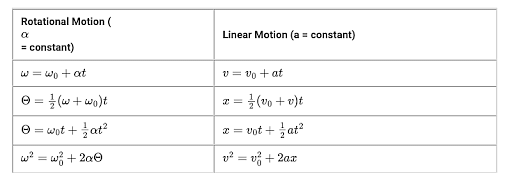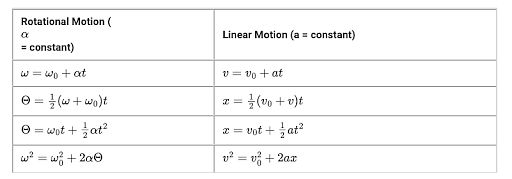Question:
To find out degree of freedom, the correct expression is:
To find out degree of freedom, the correct expression is:
Updated On: Apr 21, 2025
\(f=\frac {2}{γ-1}\)
\(f=\frac {γ+1}{2}\)
\(f=\frac {2}{γ+1}\)
\(f=\frac {1}{γ+1}\)
Hide Solution
Verified By Collegedunia
The Correct Option is A
Solution and Explanation
∵ \(γ=1+\frac 2f\)
⇒ \(\frac 2f=γ-1\)
⇒ \(f=\frac {2}{γ-1}\)
So, the correct option is (A): \(f=\frac {2}{γ-1}\)
Was this answer helpful?
0
0
Top Questions on kinetic theory
- In a mixture of gases, the average number of degrees of freedom per molecule is 6. If the rms speed of the molecule is \(c\), what is the velocity of sound in the gas?
- BITSAT - 2025
- Physics
- kinetic theory
- The temperature at which the rms speed of hydrogen molecules is same as the rms speed of oxygen molecules at a temperature of $6495^\circ$C is
- TS EAMCET - 2025
- Physics
- kinetic theory
- The specific heat capacity of one mole of water is (R is the universal gas constant):
- TS EAMCET - 2025
- Physics
- kinetic theory
- The equation for the RMS velocity is given as \[ v_{\text{rms}} = \sqrt{\frac{3RT}{M_0}} \] where \( R \) is the gas constant, \( T \) is the temperature, and \( M_0 \) is the molecular mass. If the temperature is increased, find the new RMS velocity \( v_{\text{rms}} \) when the temperature is doubled.}
- MHT CET - 2025
- Physics
- kinetic theory
- Mean free path is inversely proportional to (n = number density, d = diameter of particle)
- KEAM - 2025
- Physics
- kinetic theory
View More Questions
Questions Asked in NEET exam
- A microscope has an objective of focal length \(f_o = 2\) cm and an eyepiece of focal length \(f_e = 4\) cm. The tube length of the microscope is \(L = 40\) cm. If the distance of distinct vision of eye is \(D = 25\) cm, the magnification in the microscope is:
- NEET (UG) - 2025
- Optical Instruments
- Which one of the following is an example of ex-situ conservation?
- NEET (UG) - 2025
- Ex-Situ Conservation
- Which one of the following compounds can exist as cis-trans isomers?
- NEET (UG) - 2025
- Organic Chemistry
- Who proposed that the genetic code for amino acids should be made up of three nucleotides?
- NEET (UG) - 2025
- Molecular Biology
- An electron (mass \(9 \times 10^{-31}\) kg and charge \(1.6 \times 10^{-19}\) C) moving with speed \(c/100\) (\(c\) = speed of light) is injected into a magnetic field of magnitude \(9 \times 10^{-4}\) T perpendicular to its direction of motion. We wish to apply a uniform electric field \( \vec{E} \) together with the magnetic field so that the electron does not deflect from its path. (speed of light \(c = 3 \times 10^8\) m/s):
- NEET (UG) - 2025
- Electric Field
View More Questions
Concepts Used:
Kinetics Equations
It is branch of physics that defines motion with respect to space and time is known as kinematics.
Inverse Kinematics: Inverse Kinematics do the reverse of kinematics.
There are four basic kinematics equations:

Rotational Kinematics Equations
Another branch of kinematics equations which deals with the rotational motion of anybody.
